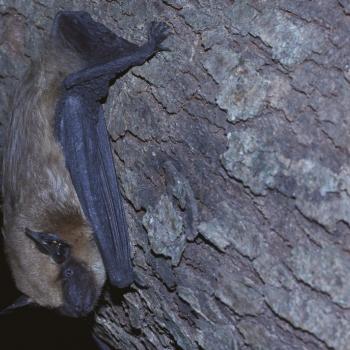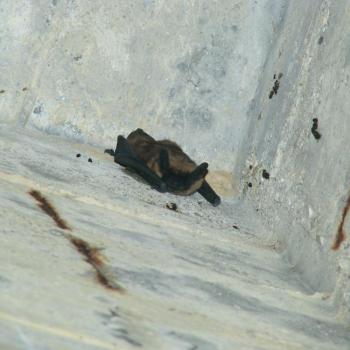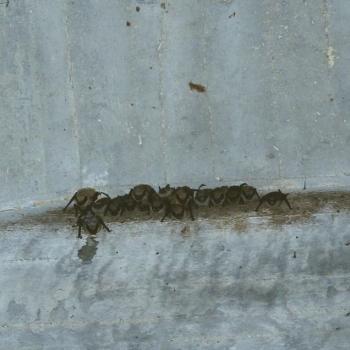Serotine bat
-
Eptesicus serotinus (Schreber, 1774)
It is a large bat with a wingspan of 31 to 38 cm and a weight ranging from 18 to 25 grams. It has medium sized ears with a rounded edge. The back hair is dark to reddish brown, while the belly is lighter to yellowish brown. The face, ears and wings are dark brown.
The Serotine bat ranges throughout continental and mediterranean Europe, as well as in England and southern Sweden. It is also present in the Middle East and the Caucasus, up to the Himalayas. Recent genetic analyses have shown that the populations of southern Iberian, northwestern Africa and eastern Himalayas belong to separate species.
It has been found in almost all parts of mainland Greece, but also in the islands of the northern Aegean and Ionian Sea and Crete.
It can be found in a wide variety of habitats: open areas with scattered trees, crops, residential areas and wetlands, but it seems to avoid dense forests. It roosts in tree cavities, rock cavities and cave entrances, but mainly in human structures (houses, bridges, artificial roosts etc.).
It has a relatively fast but flexible flight and forages at the edges of forests, wetlands and lit roads, up to 12 kilometers from its roosts. The maximum recorded age is 24 years.
It breeds in September or October, when males defend their territories very vigorously. Breeding colonies consist of 10 to 300 females. Only one young, usually in June or July, sometimes in August. The first flights of the juveniles take place after three weeks, with weaning taking place about five weeks after birth.
It feeds on various species of scarabs and dung beetles, but also on butterflies, hemiptera, orthoptera, diptera and hymenoptera, depending on their abundance.
It is included in Annex II of the Bern and Bonn Convention and Annex IV of EU Directive 92/43, but according to its criteria, its conservation status in Greece remains unknown. It is also protected by UNEP / EUROBATS and, in Greece, by the Presidential Decree 67/81. It is considered to be a species of Least Concern worldwide (IUCN) and in Greece as it has a wide distribution and is a relatively generalistic species. It is threatened by the loss or deterioration of foraging sites and the refurbishment of buildings where it resides.
On the southern coasts of the North and Baltic Seas a significant proportion (up to 25%) are carriers of the (lethal to humans) European bat 1 lyssavirus (EBLV I). But since infected animals are aggressive only when they are in a defensive state, the risk to humans is negligible. There are very few reports of infected bats (but not humans) in southeastern Europe, with the closest to Greece being a reference to central Romania.





